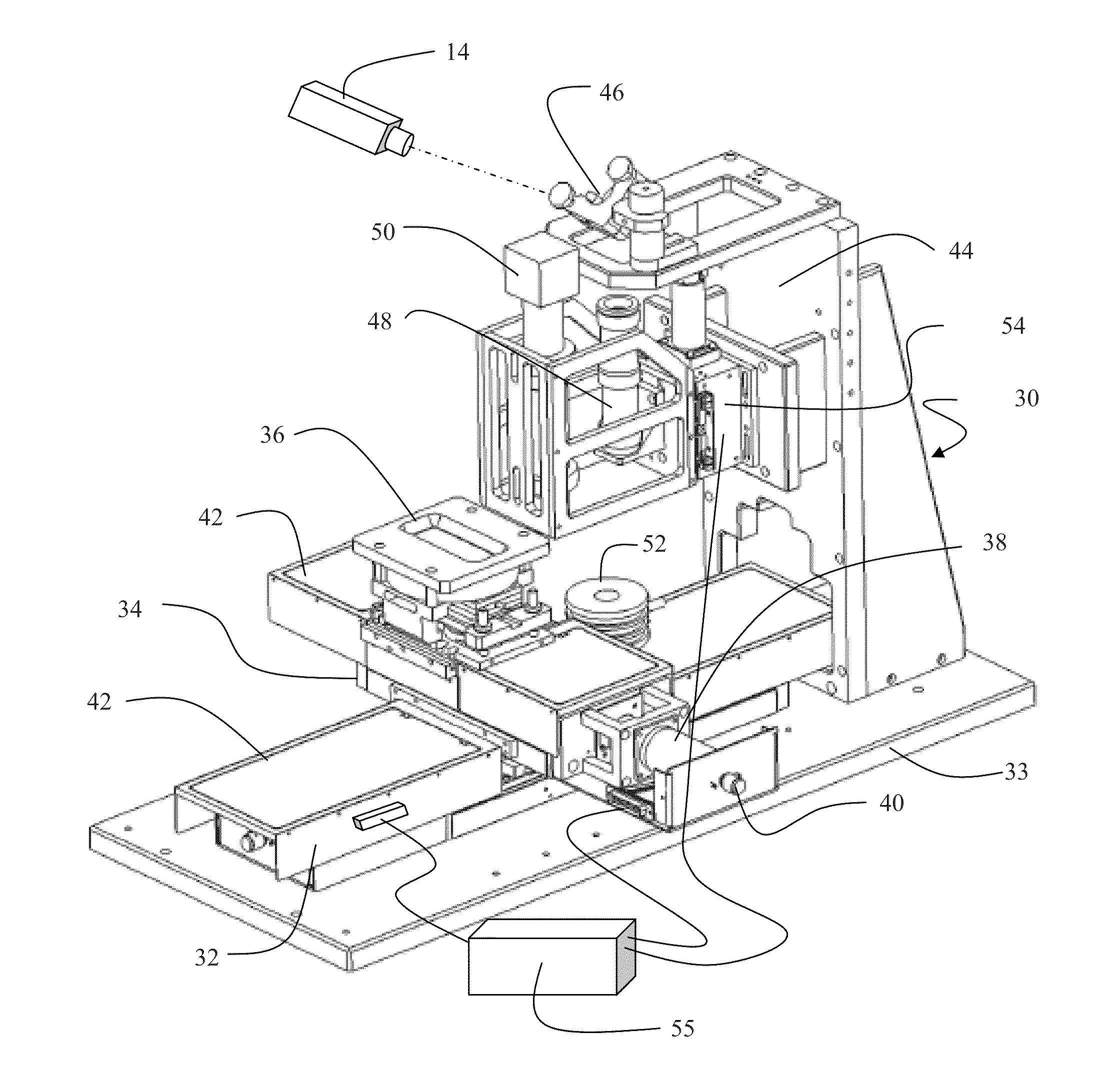Room temperature glass-to-glass, glass-to-plastic and glass-to-ceramic/semiconductor bonding
a technology of glass-to-glass, glass-to-semiconductor and room temperature, which is applied in the direction of glue vessels, auxillary welding devices, welding/cutting auxillary devices, etc., can solve the problems of aggravated contamination problems, low bonding temperature, and process not very robust against environmental particles
- Summary
- Abstract
- Description
- Claims
- Application Information
AI Technical Summary
Benefits of technology
Problems solved by technology
Method used
Image
Examples
example 1
Substrates of Different Thermal Coefficient of Expansion (TCE)
[0040]Traditional bonding processes typically occur at elevated temperatures, where a vastly different TCE generates severe temperature distortion when the bonded assembly cools down. However, with laser bonding process disclosed herein it is possible to bond dissimilar TCE materials at the temperature. Since the bulk temperature of the material being bonded can be set at the temperature of use, the TCE while still being different does not stress or otherwise distort the substrate material because it does not see a temperature change.
[0041]For example when fusion bonding two substrates that are 150 mm in diameter with a TCE that differs by 7 ppm / °C. at a temperature of 100° C. The differential change in length from the top to the bottom substrate causes an engineering strain of 0.07% translating into a tensile stress in the bottom substrate of 54.6 Mpa (7.92 kpsi). Most glasses, for example, will fail in tension between 1...
example 2
Different Light Transmission at a Similar Laser Radiation Wave Length
[0043]It is a common practice to bond glass packaging to a silicon chip. When performing this process, it is usually necessary to match the CTE of each of the materials and to use a glass material with sodium atoms that can migrate during the elevated temperature bonding process. While there are commercially available glass materials that exhibit such properties, they are hard to process during such steps as introducing a via. Photo-sensitive glass ceramic material, such as Forturan, is easy to structure; however, it has a CTE of 10 ppm / °C. and does not contain sodium ions. These two attributes make it nearly impossible to anodic bond to silicon. While it can be fusion bonded, it requires being heated to 500° C. Such a high temperature change will cause the glass-silicon assembly to fracture during the cool down process.
[0044]While diffusion or Anodic bonding Forturan to Silicon is not practical, the laser bond pro...
example 3
Glass-to-Plastic Bonding
[0046]Glass to plastic bonding is very similar to the above process with one limitation; the blocking layer should be a relatively low temperature diffusion material such that it does not melt the polymer being attached to the glass. A particularly good material with a low diffusion temperature is AuSn (gold-tin eutectic). A gold-tin blocking heat absorption layer has a diffusion temperature of 280° C. Another helpful attribute is that the laser-pulse-width approaches the thermal-time-constant of the blocking heat absorption layer layer, i.e., in the femto-second regime. The shorter the pulse length, the less likelihood there is to burn or melt the polymer prior to bonding the high-melting-temperature glass material to the lower temperature melting plastic material. It is also possible to use infared laser radiation without an interlayer and use the blocking nature of the polymer at this wavelength to perform the bonding.
PUM
| Property | Measurement | Unit |
|---|---|---|
| Fraction | aaaaa | aaaaa |
| Temperature | aaaaa | aaaaa |
| Electrical conductor | aaaaa | aaaaa |
Abstract
Description
Claims
Application Information
 Login to View More
Login to View More - R&D
- Intellectual Property
- Life Sciences
- Materials
- Tech Scout
- Unparalleled Data Quality
- Higher Quality Content
- 60% Fewer Hallucinations
Browse by: Latest US Patents, China's latest patents, Technical Efficacy Thesaurus, Application Domain, Technology Topic, Popular Technical Reports.
© 2025 PatSnap. All rights reserved.Legal|Privacy policy|Modern Slavery Act Transparency Statement|Sitemap|About US| Contact US: help@patsnap.com



